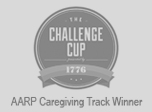Retirement Communities, which sometimes may be called active adult housing, are residences that have age restrictions. These communities range from condos, to gated single-family homes, with amenities such as fitness centers, tennis courts, pools, spas, golf courses, and other community amenities. The homes in these communities are designed to meet the safety needs of the aging resident. One of the benefits for active seniors is the low maintenance. Amenities and landscaping are usually maintained by the homeowner association. To live in these communities, it is usually required that one spouse is over 55 years old. Residents don't have to be retired to live in these communities. Homes in these communities are usually bought, not rented, although some communities offer the option to rent. Healthcare services provided by these communities range from limited support to on-site services.
Independent Living, may also be called "Retirement Communities," "Congregate Living" or "Senior Apartments." These housing communities are designed for independent seniors that want the convenience of community living with recreational, educational and social activities. Like 55+ communities, these communities are low maintenance. Seniors spend less time performing home maintenance and yard work. Homes are usually rented at a market rate, but some subsidized senior apartments are affordable for seniors with low incomes. Healthcare services are not provided, but some communities will allow residents to receive assistance from a homecare agency.
Assisted Living, which may be called Residential Care Facilities, Community Based Retirement Facilities, Personal Care, Adult Living Facilities, or Adult Foster Care. These housing facilities may offer the same features as independent living communities, with additional assistance with personal care. Residents will receive help with their activities of daily living but don't need medical care in a nursing home. The costs to reside at an assisted living depend on the number of services provides by the facility. Regulations and licensure requirement vary from state to state. There are no federal regulations for these facilities.
Continuing Care Retirement Communities (CCRC) are residential homes that provide a continuum of care, from private dwelling to assisted living and skilled nursing care, all in one locale. These communities are created to provide active seniors with an independent lifestyle, but also a large scope of services offered by an assisted living and nursing home if needed. These communities offer seniors the following: housekeeping services, laundry services, meals, ground maintenance, emergency call monitoring, security, transportation and recreational activities. In addition, these communities offer healthcare services like nursing care, personal care, rehabilitation, hospice, respite care, and Alzheimer's care. The cost of Continuing Care Retirement Communities varies from one community to another. An Extensive contract offers unlimited skilled nursing care for a small cost or no price increase in monthly fees. A Modified contract charges additional fees for services that exceed a specified amount of services. In some communities, services might be provided on a month-to-month basis.
Nursing Homes, or Skilled Nursing Facilities, are designed for adults that are seriously ill and needs extensive or continuous nursing care or 24-hours supervision. Like other residential options, Nursing Homes offers room and board, housekeeping and linen service, personal care, safety monitoring. The difference is the 24-hour onsite medical monitoring by registered nurse (RN), licensed practical nurse (LPN), and nurses aides. Usually, nursing homes offer three levels of care: Basic, Skilled, and Sub-Acute. Basic Care is designed for people who require assistance with activities of daily living like personal care, supervision and safety. Skilled Care is the level of care for people who needs 24-hour medical supervision, skilled nursing care, or rehabilitation, but do not need hospitalization. Sub-Acute Care is designed for someone had an acute illness, injury, or chronic illness. For instance, this care might be appropriate for someone recovering from a broken hip, recent stroke, or an illness that requires 24-hour care. Care is provided by a registered nurse but supervised and authorized by a physician. The cost of sub-acute care is partially covered by Medicare. For Basic Care & Skilled Care, private funds or long-term insurance are often used. When funds are exhausted, residents can apply for Medicaid to cover payment. Nursing homes charges a basic daily or monthly rate.
Alzheimer's Care Facilities are homes that specialize in caring for individuals with Alzheimer's disease and other dementias. These specialized homes provide an environment that maximize safety and minimize confusion. For instance, to prevent wandering, these facilities might have disguised and locked doors, and an indoor/outdoor wander path. Other features include dementia-trained staff, constant lighting, comfortable temperature, color-coded hallways, signs, memory aides and activity programs designed to assist with reality orientation classes. Besides providing a safe environment, Alzheimer's Care Facilities provide assistance with activities of daily living, medication monitoring, health management, meals, laundry, and housekeeping services. The cost varies by care facilities depending on several factors like the level of care, room size, and geographical location.
Hospice Facilities provide pain and symptom relief for people whose life expectancy is six month or less. These facilities enable seriously ill patients to live the last days to the fullest, with purpose, dignity, grace and support. Hospice care focuses on all aspects of a patient's life and well-being: physical, social, emotional, and spiritual. Most facilities provide an interdisciplinary medical team that includes the patient's physician, a hospice doctor, a case manager, social workers, a counselor, therapist, registered and licensed nurses, nurse aides, a dietician, pharmacologist, a minister and various trained volunteers. The team works together to create a person-centered care plan for pain management and symptom relief, and provides the necessary palliative drugs and therapies, medical supplies, and equipment. Hospice neither hastens nor postpones dying. The goal of hospice is to improve the quality of life of the patient. If a patient's condition improves, they can be discharged from hospice and return to curative treatment. Even if prognosis hasn't changed, patients can go on and off hospice as needed or if they decide to return to curative treatment. Hospice care is be covered by Medicare, Medicaid, and most private insurance plans.













